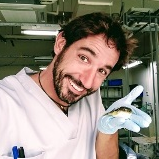Gamete, Embryo and Larvae Handling in Aquatic Animals
A special issue of Animals (ISSN 2076-2615). This special issue belongs to the section "Aquatic Animals".
Deadline for manuscript submissions: closed (1 October 2022) | Viewed by 12439
Special Issue Editors
Interests: aquaculture; cryobiology; gamete quality; reproductive biology; sperm motility; biodiversity; marine biology; freshwater biology
Special Issue Information
Dear Colleagues,
Artificial reproduction in aquatic animals usually involves the collection and handling of gametes both from males and females in a way that secures their quality and maximizes the fertilization event. The techniques can vary widely across the different taxa (from invertebrates to vertebrates), and of course across the gametes that we are managing (spermatozoa or oocytes). In addition, a successful fertilization process becomes the embryo development step, which is also crucial for obtaining the outcome: the larvae. There are innumerable specie-specific or family-specific protocols along the different aquatic species that inhabit from freshwater lagoons to seawater oceans, and several steps in each protocol can strongly affect the fertilization success, from the gamete collection process until larvae hatching.
The aim of this Special Issue is to bring together original research studies and review papers on basic and applied aspects of gamete, embryo and larvae handling in aquatic animals. In that sense, we aim to gather high-quality papers addressing different areas focused on gamete collection and handling, gamete storage (both short- and long-term storage), in vitro fertilization techniques, embryo development studies, and larvae management of different aquatic animals. Researchers working in fish reproduction both with an approach on aquaculture industry or on biodiversity preservation are welcome to contribute in-depth reviews, original full articles, and unique case reports.
Dr. Víctor Gallego
Dr. Estefanía Paredes
Guest Editors
Manuscript Submission Information
Manuscripts should be submitted online at www.mdpi.com by registering and logging in to this website. Once you are registered, click here to go to the submission form. Manuscripts can be submitted until the deadline. All submissions that pass pre-check are peer-reviewed. Accepted papers will be published continuously in the journal (as soon as accepted) and will be listed together on the special issue website. Research articles, review articles as well as short communications are invited. For planned papers, a title and short abstract (about 100 words) can be sent to the Editorial Office for announcement on this website.
Submitted manuscripts should not have been published previously, nor be under consideration for publication elsewhere (except conference proceedings papers). All manuscripts are thoroughly refereed through a single-blind peer-review process. A guide for authors and other relevant information for submission of manuscripts is available on the Instructions for Authors page. Animals is an international peer-reviewed open access semimonthly journal published by MDPI.
Please visit the Instructions for Authors page before submitting a manuscript. The Article Processing Charge (APC) for publication in this open access journal is 2400 CHF (Swiss Francs). Submitted papers should be well formatted and use good English. Authors may use MDPI's English editing service prior to publication or during author revisions.
Keywords
- sperm
- oocyte
- fertilization
- fish
- marine invertebrates







